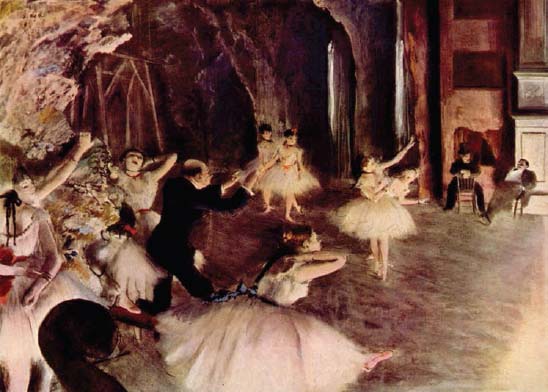From the Industrial Revolution to World War I, C. 1850–1914Impressionism |
Why did ballerina dancers fascinate Degas? |
Edgar Degas’ paintings of young ballet dancers were neither erotic nor psychologically engaged. Like other Impressionists, Degas was fascinated by light, and dancers provided Degas many opportunities to experiment with light as they were usually illuminated by heavy artificial spotlights and other types of stage lighting. In his 1877 painting, Dancer with a Bouquet, Bowing, a ballet dancer’s face becomes mask-like and garish under the harsh floor lights running along the stage. In addition to light, Degas also explored figurative movement, another interest that benefited from using the flexible dancer as a subject. Many of Degas’ paintings feature dancers as they are stretching and preparing for a performance, such as his 1879 pastel drawing, Awaiting the Cue. Focusing on dancers allowed Degas to represent surprising angles and poses of the human body. These paintings often feature an angular, cropped quality that brings the drama of light and movement to the forefront, and also shows the influence of Japanese prints.

Edgar Degas painted ballet dancers because he was interested in the dynamic form of the human body. The Rehearsal Onstage (1874) depicts two dancers in motion, limbs askew.
